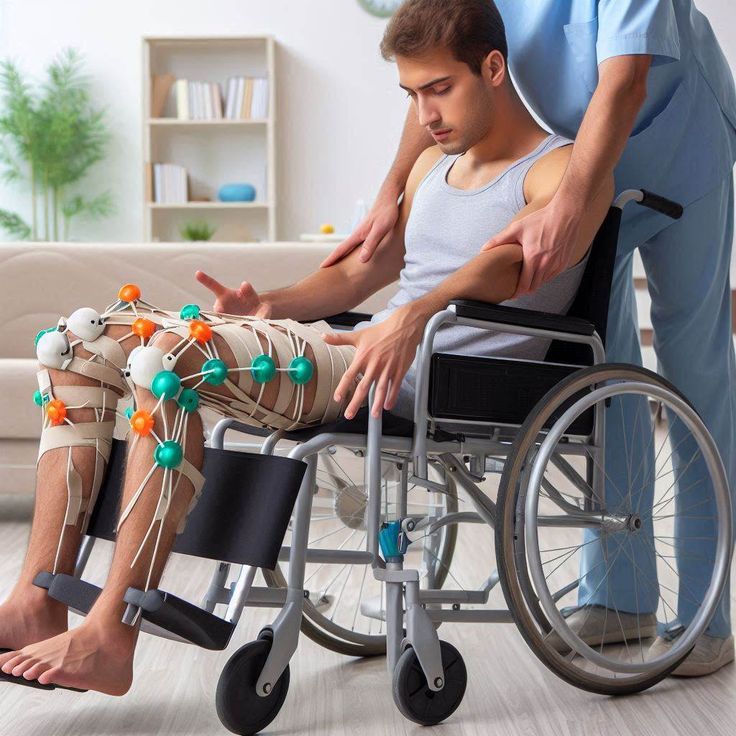
Q.1 What is Muscular Dystrophy?
Muscular Dystrophy (MD) is a group of genetic disorders that cause progressive muscle weakness and degeneration. It affects the muscles’ ability to function properly over time.
Q.2 What is the underlying cause of Duchenne Muscular Dystrophy?
Duchenne Muscular Dystrophy (DMD) is caused by mutations in the dystrophin gene, which leads to the absence of dystrophin protein, essential for muscle strength and stability.
Q.3 Can a person develop Muscular Dystrophy at an older age?
Yes, some types of Muscular Dystrophy, like Myotonic Dystrophy, can develop in adulthood, while others, like Congenital Muscular Dystrophy, are present at birth.
Q.4 How can massage help Muscular Dystrophy?
Massage therapy can relieve muscle pain, relax tight muscles, and improve circulation. It helps maintain range of motion and reduces stress, benefiting overall well-being.
Q.5 Can Muscular Dystrophy be prevented in newborns?
Currently, there is no way to prevent Muscular Dystrophy in newborns. However, early diagnosis and intervention can help manage symptoms and improve quality of life.
Q.6 Is Muscular Dystrophy genetic?
Yes, Muscular Dystrophy is a genetic disorder caused by mutations in specific genes that affect muscle function.
Q.7 Can a girl have Muscular Dystrophy?
Yes, girls can have Muscular Dystrophy, although it is less common. They can be carriers of the gene mutation and may exhibit mild symptoms.
Q.8 What are the chances of causing Muscular Dystrophy in the second child if the first one is already suffering?
If one child has Muscular Dystrophy, the chances of the second child having it depend on the inheritance pattern. Genetic counseling can provide more precise information.
Q.9 What is the role of physical therapy in MD management?
Physical therapy helps maintain muscle strength, flexibility, and mobility. It delays muscle degeneration, improves posture, and reduces the risk of contractures and joint stiffness.
Q.10 How do new research findings impact MD treatment?
New research findings lead to innovative treatments and therapies for MD. They offer hope for better management and potential cures in the future.
Q.11 What is the role of multidisciplinary care in MD management?
Multidisciplinary care involves a team of specialists working together to provide comprehensive care for MD patients. It addresses physical, emotional, and psychological needs.
Q.12 How do new rehabilitation techniques benefit MD patients?
New rehabilitation techniques focus on improving muscle function and mobility. They help patients maintain independence and enhance quality of life.
Q.13 What is the impact of community support on MD patients?
Community support provides resources, education, and emotional support for MD patients. It helps them navigate the challenges of the disease and improve their overall well-being.
Q.14 How do new assistive devices improve MD patients’ lives?
New assistive devices like powered wheelchairs and adaptive equipment enhance mobility and independence. They provide support for weakened muscles and improve daily living.
Q.15 What is the role of genetic testing in MD diagnosis?
Genetic testing identifies specific mutations causing MD, confirming the diagnosis and guiding treatment options. It helps determine the type of MD and provides information for family planning.
Q.16 How do corticosteroids help MD patients?
Corticosteroids like prednisone increase muscle strength and delay disease progression. They reduce inflammation and improve muscle function in MD patients.
Q.17 What are the latest surgical options for MD?
Surgery can correct deformities and improve function in MD patients. Procedures like tendon release and scoliosis correction help manage symptoms and improve quality of life.
Q.18 How does respiratory therapy benefit MD patients?
Respiratory therapy includes exercises and devices to support breathing. It helps improve lung function, reduce respiratory complications, and enhance overall health.
Q.19 What is the role of physical activity in MD management?
Physical activity helps maintain muscle strength, flexibility, and overall health. It reduces muscle stiffness and improves cardiovascular fitness, enhancing quality of life.
Q.20 How do new research findings impact MD treatment?
New research findings lead to innovative treatments and therapies for MDs. They offer hope for better management and potential cures in the future.
Q.21 What is the role of multidisciplinary care in MD management?
Multidisciplinary care involves a team of specialists working together to provide comprehensive care for MD patients. It addresses physical, emotional, and psychological needs.
Q.22 How do new rehabilitation techniques benefit MD patients?
New rehabilitation techniques focus on improving muscle function and mobility. They help patients maintain independence and enhance quality of life.
Q.23 What is the impact of community support on MD patients?
Community support provides resources, education, and emotional support for MD patients. It helps them navigate the challenges of the disease and improve their overall well-being.
Q.24 How do new assistive devices improve MD patients’ lives?
New assistive devices like powered wheelchairs and adaptive equipment enhance mobility and independence. They provide support for weakened muscles and improve daily living.
Q.25 What is the role of genetic testing in MD diagnosis?
Genetic testing identifies specific mutations causing MD, confirming the diagnosis and guiding treatment options. It helps determine the type of MD and provides information for family planning.

